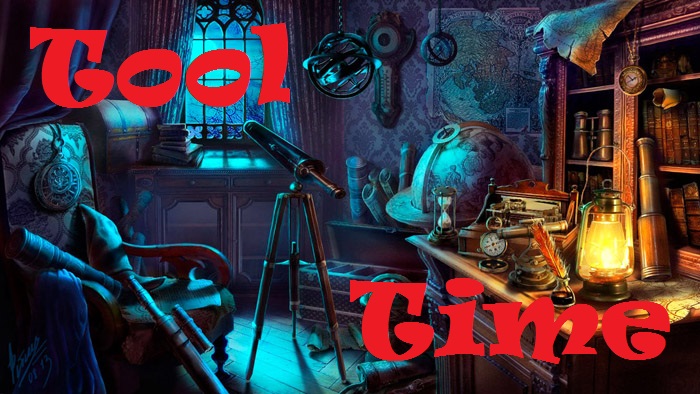
Our
recommended order of operations when you engage a chart...
By John Townley, March 2015
When you look at a chart, what do you evaluate first
and
most, least and last, what’s your order of battle? What tools do you
choose to use preferentially,
and which do you leave on the table for later? Here’s a thumbnail
list, a la
Vivian Robson's "Fifteen Points in Professional Astrology", of my own marching/sailing
orders,
based on the theory
that astrology is primarily physical in nature (though psychological or
spiritual in
its effects) and that the natal horoscope is a map of the habits
and expectations you get from
experiencing it. It’s all about the rhythms, tides of the
planets, and
how they repeat themselves based on the natal starting point. It's
short and
sweet, but with lots of links for further explanation on many of the
steps.
There are lots more refinements and techniques available that are worth
pursuing, but here are the most important steps to initially and
solidly nail
down the native horoscope:
1. Chart shape.
That’s the biggest generality. It tells
whether you’re a solo player, a
multitasker, are partner-driven, or ambition-fired, lots more.
It’s simple Jones patterns,
q.v. for more.
2. Clusters…
…preponderances,
then patterns. Planets can be little clustered islands in the
sky (stelliums) that
always concentrate specific things, or spread out into broader
supportive
(trines, sextiles, grand or otherwise) or debilitating (squares,
crosses)
patterns that get repeatedly activated by transits and progressions.
This portrays
style, from easy grace to constant struggle, in the planetary areas
concerned.
Preponderance of element (earth, air, fire, water) or lack thereof also
show
critical balance issues.
3. Sun, Moon, Ascendant...
…by
sign, house, aspect,. Most astrologers start with
this, because it’s the big guns. Who you feel you are (Sun), how
you react (and
thus your feelings, Moon), and your physical appearance, what you see
in the
mirror.
4. Chart order...
…(rising ahead of Sun,
what follows what). Back to a more careful consideration of islands in
the sky.
What gets hit in what order,
and
thus what you come to believe comes next, in life. It’s the order
of the acts
in your show, who's the opener, the closer, which one introduces the
next –
it’s how the drama unfolds, over and over again.
5. Most featured planet...
…(not
necessarily "ruling" planet). The
tradition “ruler of the Ascendant” may be most important,
but not always. A
bucket handle planet can be critical, or whatever takes the most
aspects (so it
always gets the most attention at once), kind of like who’s mom
or dad’s
favorite sibling.
6. Most afflicted planet...
...the
downside of the last. Mommy (or Daddy) never
liked that one, or just ignored the little bugger. It’s the
source of a
preponderance of problems.
7. Elements, angularity.
This is a
refinement of #2. You can use Lilly
weighting, or more modern count-up methods. Basically, it’s about
what’s in
your face, and what lurks behind.
8. Outer and inner planets...
…and
their cross-involvement. This is a subset of
general aspect evaluation, but critical. Inner planets involved with
outer ones
mean personal issues driven by social ones, which can sweep you along
in the
popularity and acceptance game or hang you out to dry. It’s the
mortar and pestle
of moral and spiritual conflict and the arbiter of both faith and hope.
9. Nodes and Vertex...
…and
their involvement. This is similar to above, but
locked into bigger issues, almost like the jaws of Fate. Here is where
critical
turning points, deep friendships, ancient enemies, critical crossroads
that
promise life-changing possibilities, but don’t give the details.
Nodes are like
“karma”, Vertex like blind fate.
Conjunction
and opposition, primarily.
10. Basic midpoints.
There are
so many midpoints, and they each tell the
tale of where the power shifts from one planet to another. Most
important are
Sun/Moon, Venus/Mars,
Jupiter/Saturn, Uranus/Neptune, Mercury/Pluto..
There are
lots of other things to look at in a basic
natal, but that’s the basic high-priority stuff. But don’t
just leave it there,
at each step. Every one is likely to pique your curiosity, lead you
down side
paths to fill it out. And look for trends across the board,
similarities that
reflect or reinforce the overall picture. Feel free to diverge, and
above all,
if you’re doing this for a client, ask specific questions about
what’s actually
happened, developed in the life, what current concerns are. It will
focus both
of you, save immense time.
Now, for
the rest:
11. Transits...
…of
planets/angles by planets. That’s standard, and
conjunctions count the most. And remember, all transits are cyclic, so
check
out not only what’s happening now, but what happened on the last
several
before, to develop style and trends. Remember, the reinforcement by
these
cycles is what makes for the habits and expectations
that are the “character” found in the chart. And if any one
transit is part of
a larger, ongoing sky pattern at the time, that makes the effect more
noticeable. Look for direct hits (conjunctions) first of the bad-boy
outer
planets for shifts that can’t be fought, then Jupiter and Saturn,
for fair
winds or foul weather that can be handled, then Mars, Sun, Moon, and
the inners
for accents along the way.
12. Transiting planets...
…by
house. When a planet gets into a house, it colors
the area for the duration of the transit. Affairs of that house start
to point
accordingly, up, down, or just different…but also repeating what
happened the
last time in another form, so you’ll see what’s being
emphasized, reinforced.
13. Lunations…
…esp.
eclipse rhythms, waves. This is a different
form of transit, more like a strong accent. Lunations are like wave
crests,
when the overall pressure is greater, tides run higher (inside and
out). When
they hit personal degrees, then your surfboard is riding the wave, so
it’s time
to ride it while taking especial care not to fall off in the process.
Eclipses
are the extra-intense version.
14. Progressed Moon.
Progressed
new and full Moon are life-changers. New Moon
launches into a whole new life, quitting the previous, either by choice
or
necessity. Full Moon is time to cash in on work and resources, often
move in
the process. The house the progressed Moon is passing through is the
current life
focus.
15. Progressed sign changes...
…and
transits chasing progression whirlpools. Inner
style changes when progressed planets change sign, whole life does when
they go
over the Ascendant. Also watch for transit/progression tie ups like Moon
chasing Saturn, or
progressed Sun or
Moon (or even inner planets) tangling back and forth with transiting
outers.
These can be real tripping points, kinks in developments.
16. Solar returns.
It’s
when the tone/phase
of the solar rhythm resets, and
the return chart describes the timbre of the year’s tune. Yes,
it’s worth travelling for,
if it looks bad at
home. Lunar returns
are worth a look, too, but
they’re comparatively light-weight, not worth getting too deep
into, as they’re
gone so quickly.
Preponderance
of Evidence
Well,
there you go, simple as that! But the story isn’t
in any one of these, but in how they all stack up together. When a life
is in
crisis, or when riding suddenly to unexpected success, it’s
usually the result
of multiple factors combining to heighten the effect. Like wind, tide,
and
currents all converging to carry you out to sea, or beat you back to a
standstill in the channel. Put it all together, weigh the combinations,
then go
with the preponderance of evidence...

Not
a
newsletter subscriber already? Subscribe
Free
Here!
And
every day, keep in touch with our Astrology In The News section...please
take a look! --
Breaking news from
around the globe, plus articles, reviews, it's all happening there,
changes daily..

